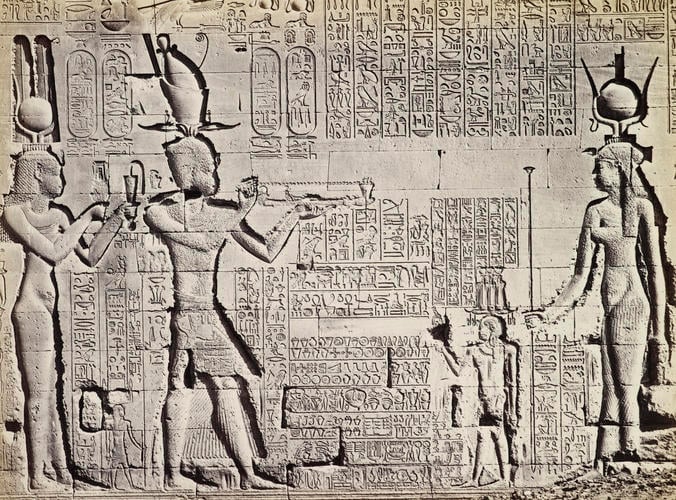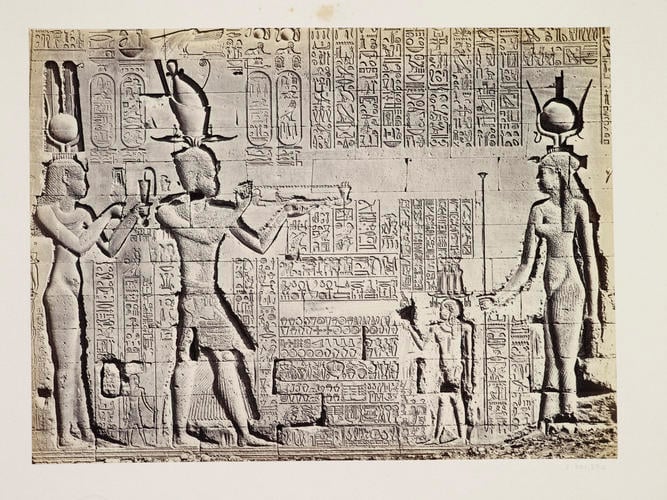Francis Frith (1822-98)
Denderah - Sculptures with Cleopatra and her son Nero-Caesar 1857-59
Albumen print | 15.6 x 20.9 cm (image) | RCIN 2701270
-
Detail of the colossal carving of Cleopatra VII Philopator (51-30 BC) and her son Ptolomey XV Caesarion (44-30 BC) before the gods, on the south exterior wall of Temple of Dendera. The large goddess on the right, the first of a procession of deities not included in the photograph, is Hathor. The present temple at Dendera is essentially a Ptolemaic structure, with the exception of the mammisi (or 'birth house') erected by Nectanebo I (380-362 BC), which represents the earliest surviving structure of the complex, and later Roman additions, such as the first hypostyle hall, built by the Emperor Tiberius (42 BC-AD 37). There is evidence, though, that the temple was built on the site of a previous one, dating at least from the early New Kingdom (around 1500 BC) with suggestions of structures being present in the area at the time of Pepy I (2321-2287 BC). The temple, one of the best preserved in Egypt, is dedicated to Hathor. The goddess is usually represented as a cow, often with the solar disc between the horns, in human form with, similarly, the solar disc between cow horns, such as in this case, or as a woman with cow’s ears. Her name means ‘house of Horus’ and, as the living king was identified with Horus, Hathor was considered the divine mother of the pharaoh, who had ‘son of Hathor’ as one of his royal titles. It is then certainly not a case that Cleopatra decided to have this colossal scene carved onto a wall of the temple of Hathor. Caesarion was allegedly the child Cleopatra had with Julius Caesar (100-44 BC) but, after the violent death of the Roman consul and the suicide of Mark Anthony (83-30 BC), with whom the queen was also romantically linked and whose self-inflicted death prompted her to follow suit, the young pharaoh did not enjoy the protection of the gods as died at the orders of Octavian, future Augustus (63 BC-AD 14). This represented the end of the Ptolemaic dynasty and the beginning, with Octavian's self-proclamation as pharaoh on 30 August 30 BC, of the last historic phase of ancient Egypt, the Roman Period (30 BC-AD 395).
Provenance
Acquired by King Edward VII when Prince of Wales
-
Creator(s)
(photographer)(publisher)Acquirer(s)
-
Medium and techniques
Albumen print
Measurements
15.6 x 20.9 cm (image)
37.5 x 28.0 cm (page dimensions)









